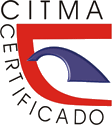Influencia de las vías de inmunización mucosales sobre la protección contra herpes simple tipo 2 con el AFCo1 como adyuvante
Resumen
Las vacunas mucosales se han planteado como una estrategia prometedora para inducir protección mucosal. El virus herpes simple tipo 2 es uno de los patógenos más frecuentes en el humano transmitidos por vía sexual. Varios candidatos vacunales contra este patógeno se han evaluado, pero no han sido efectivos, por lo que aún no se cuenta con una vacuna profiláctica ni terapéutica. La gD2 es una glicoproteína recombinante y está reportada como uno de los antígenos de importancia vacunal contra este germen. Contamos con el cocleato derivado del proteoliposoma de Neisseria meningitidis serogrupo B (AFCo1) que ha mostrado capacidades adyuvantes por varias vías de inmunización. El objetivo de este trabajo fue evaluar la protección inducida en ratones por el AFCo1-gD2, administrada por diferentes vías mucosales. Se utilizaron ratones hembras C57BL6, los cuales fueron inmunizados por vía intranasal (IN), intravaginal (IVag) o intrarrectal (IR) con AFCo1-gD2 o gD2 sola. Se determinó la IgG anti gD2, la proliferación celular específica, la replicación viral en lavado vaginal, los signos de la enfermedad y la protección frente al reto viral. Se obtuvo respuestas significativas de IgG anti gD2 por todas las vías, aunque la IN mostró los valores más elevados. Se observó proliferación celular en células de animales inmunizados IN e IVag, pero no por vía IR. Se observó la mayor protección (100%) en los animales inmunizados por vía IN. Se concluye que la vía nasal es la más prometedora en la inducción de protección contra este reto viral.Citas
Cooper D, Mester JC, Guo M, Nasar F, Souza V, Dispoto S, et al. Epitope mapping of full-length glycoprotein D from HSV-2 reveals a novel CD4+ CTL epitope located at the transmembrane-cytoplasmic junction. Cell Immunol 2006;239:113-20.
Whitley RJ. Herpes simplex virus infection. Semin Pediatr Infect Dis 2002;13(1):6-11.
Hagan DO, Goldbeck C, Ugozzoli M, Ott G, Burke RL. Intranasal immunization with recombinant gD2 reduces disease severity and mortality following genital challenge with herpes simplex type 2 in guinea pigs. Vaccine 1999;17:2229-36.
Roizman B, Knipe DM. Herpes simplex viruses and their replication. In: Knipe DM, Howley PM, editors. Fields virology. 4th ed. Philadelphia: Lippincott, Williams & Wilkins; 2001. p. 2399-459.
Stanberry LR. Clinical trials of prophylactic and therapeutic Herpes Simplex Virus vaccine. HERPES 2004;11(Suppl 3):161A-169A.
Koelle DM, Corey L. Recent progress in herpes simplex virus immunobiology and vaccine research. Clin Microbiol Rev 2003;16(1):96-113.
Pérez O, Lastre M, Cabrera O, del Campo J, Bracho G, Cuello M. New Vaccines Require Potent Adjuvants like AFPL1 and AFCo1. Scandinavian Journal of Immunology 2007;66:271-7.
O`Hagan DT, Valiante NM. Recent advances in the discovery and delivery of vaccine adjuvants. Nat Rev 2003;2:727-35.
Del Campo J, Lindqvist M, Cuello M, Bäckström M, Cabrera O, Persson J. Intranasal immunization with a proteoliposome-derived cochleate containing recombinant gD protein confers protective immunity against genital herpes in mice. Vaccine 2010;28:1193-200.
Harandi AM, Eriksson K, Holmgren J. A protective role of locally administered immunostimulatory CpG oligodeoxynucleotide in a mouse model of genital herpes infection. J Virol 2003;77: 953-62.
Tengvall S, Josefsson A, Holmgren J, Harandi A M. CpG oligodeoxynucleotide augments HSV-2 glycoprotein D DNA vaccine efficacy to generate T helper 1 response and subsequent protection against primary genital herpes infection in mice. Journal of Reproductive Immunology 2005;68:53-69.
Tengvall S, Lundqvist A, Eisenberg RJ, Cohen GH, and Harandi AM. Mucosal Administration of CpG Oligodeoxynucleotide Elicits Strong CC and CXC Chemokine Responses in the Vagina and Serves as a Potent Th1-Tilting Adjuvant for Recombinant gD2 Protein Vaccination against Genital Herpes. Journal of Virology 2006;80:5283-91.
Cuello M, Cabrera O, Acevedo R, Núñez N, del Campo J, Lastre M. Nasal immunization with AFCo1 induces immune response to N. gonorrhoea in mice. Vaccimonitor 2009;18(2):78-80.
Del Campo J, Zayas C, Romeu B, Acevedo R, González E, Bracho G. Mucosal immunization using proteoliposome and cochleate structures from Neisseria meningitis serogroup B induce mucosal and systemic responses. Methods 2009;49(4):301-8.
Belyakov IM and Ahlers JD. What Role Does the Route of Immunization Play in the Generation of Protective Immunity against Mucosal? J Immunol 2009;183:6883-92.
Mohammad J, Hoorieh S, Fatemeh F, Pakravan N. Comparison of intramuscular and footpad subcutaneous Immunization with DNA vaccine encoding HSV-gD2 in mice. Comparative Immunology, Microbiology and Infectious Diseases 2009; 32(5):453-61.
Ogra PL, Mestecky J, Lamm ME, Strober W, Bienenstock J, McGhee JR. Immunology Mucosal. 2da ed. London: Academia Press; 1999.
VacciMonitor es una revista de libre acceso, bajo licencia Creative Commons. La revista permite reutilizar su contenido acorde a: https://creativecommons.org/licenses/by-nc/4.0/, y concede a los autores mantener su copyright sin restricciones.
-Distribuir copias, electrónicas o impresas, del artículo publicado entre sus estudiantes o colegas, así como permiso para que los demás miembros de su institución las utilicen con propósitos de enseñanza.
-Reutilizar parte o la totalidad del artículo en nuevos manuscritos o libros futuros.
-VacciMonitor no pone reparos en que el autor coloque su versión, o la editada por la revista, en su sitio web personal o en un repositorio de acceso abierto.
-VacciMonitor autoriza a otras casas editoriales o bases de datos a reproducir los materiales originales publicados en ella, siempre que se indique su procedencia.





